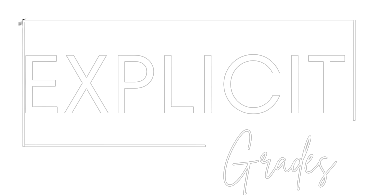I. Introduction
A. Brief overview of Sophia Learning
Sophia Learning is an innovative online learning platform that offers a wide range of courses designed to help students acquire new skills and knowledge at their own pace. The platform provides high-quality, self-paced courses that cover various subjects, including math, science, and humanities.
B. Importance of learning statistics
Statistics is the science of collecting, analyzing, and interpreting data to make informed decisions. It plays a crucial role in various fields, including business, healthcare, social sciences, and natural sciences. Learning statistics helps us better understand the world around us, and make evidence-based decisions in our personal and professional lives.
C. Purpose of the blog post
This blog post aims to provide a comprehensive guide for students enrolled in Sophia Learning’s Intro to Statistics course. We’ll cover everything from getting started with the course, key concepts, practical applications, assignments, resources for further learning, and more.
II. Getting Started with Sophia Learning’s Intro to Statistics
A. Enrolling in the course
Enrolling in Sophia Learning’s Intro to Statistics course is easy. Visit the Sophia Learning website, create an account, and follow the prompts to sign up for the course. Once you’ve enrolled, you’ll have access to all course materials, assignments, and resources.
B. Overview of course content
The course covers a range of topics, including descriptive statistics, probability, inferential statistics,
and real-world applications. It provides a solid foundation for those looking to advance their understanding of statistics and its practical uses.
C. Tips for success in online learning
- Set a consistent study schedule: Dedicate specific times and days each week for studying to develop a routine.
- Stay organized: Keep track of your assignments, deadlines, and course materials in a planner or digital calendar.
- Engage with the course material: Take notes, ask questions, and participate in discussions to deepen your understanding.
- Break tasks into smaller, manageable pieces: This will help reduce overwhelm and make progress more achievable.
- Seek help when needed: Reach out to tutors to complete your sophia statistics course or peers if you’re struggling with a concept or assignment.
III. Exploring Key Concepts in Intro to Statistics
A. Descriptive statistics
- Measures of central tendency: These are values that describe the “center” or “average” of a data set, such as mean, median, and mode.
- Measures of dispersion: These values indicate the spread or variability within a data set, including range, variance, and standard deviation.
B. Probability and probability distributions
- Basic probability concepts: Learn how to calculate the likelihood of an event occurring using the concepts of sample spaces, events, and probability rules.
- Common probability distributions: Understand the properties and applications of various probability distributions, such as binomial, normal, and Poisson distributions.
C. Inferential statistics
- Sampling and sampling distributions: Learn how to draw conclusions about a population using samples and the concept of sampling distributions.
- Confidence intervals: Understand how to estimate population parameters within a range, taking into account the
level of confidence and margin of error. 3. Hypothesis testing: Discover the process of testing claims about a population using sample data, significance levels, and test statistics.
IV. Practical Applications of Statistics
A. Real-world examples of statistical analysis
Statistics are used in various fields, such as market research, quality control, political polling, and public health. For instance, businesses use statistical analysis to optimize pricing strategies, while scientists rely on it to draw conclusions from experimental data.
B. Importance of statistical literacy in everyday life
Statistical literacy is essential for interpreting data, making informed decisions, and evaluating the reliability of information presented in the media. It empowers us to think critically and make evidence-based choices in our personal and professional lives.
C. Career opportunities in statistics
A strong foundation in statistics opens up a wide range of career options, including roles as data analysts, statisticians, market researchers, and more. Industries like finance, healthcare, sports, and technology all value professionals with statistical expertise.
V. Navigating Sophia Learning’s Intro to Statistics Assignments
A. Types of assignments
- Quizzes: Assess your understanding of course concepts through multiple-choice and short-answer questions.
- Problem sets: Apply your knowledge to solve real-world problems and enhance your analytical skills.
- Discussion forums: Engage with your peers to discuss course material, share insights, and clarify doubts.
B. Strategies for completing assignments
- Time management tips: Allocate sufficient time to work on assignments and avoid last-minute cramming.
- Seeking help from instructors and peers: Don’t hesitate to ask questions and seek clarification when needed.
C. Frequently asked questions and answers
This section will cover common questions and provide answers to help you navigate the course more effectively. As you progress through the course, you may encounter questions or challenges; always remember that you can reach out to instructors or fellow students for assistance.
VI. Resources for Further Learning and Practice
A. Recommended textbooks and online resources
- “Statistics for Dummies” by Deborah J. Rumsey
- “The Art of Statistics” by David Spiegelhalter
- Khan Academy’s statistics and probability lessons
- Coursera’s statistics courses and specializations
B. Study groups and online communities
Joining study groups or participating in online forums can provide additional support and opportunities for collaboration. Connect with other students through social media, course discussion boards, or local meetups to share resources, discuss concepts, and work together on assignments.
C. Additional courses and certifications
After completing the Intro to Statistics course, consider enrolling in more advanced courses or pursuing a certification program to further your expertise. Many universities and organizations offer graduate-level programs in statistics, data science, and related fields.
VII. Conclusion
A. Recap of blog post content
This comprehensive guide has covered various aspects of Sophia Learning’s Intro to Statistics course, including enrollment, course content, key concepts, practical applications, assignments, and resources for further learning.
B. Encouragement for continued learning and growth in statistics
As you progress through the course, remember that learning statistics is a valuable skill with numerous real-world applications.

